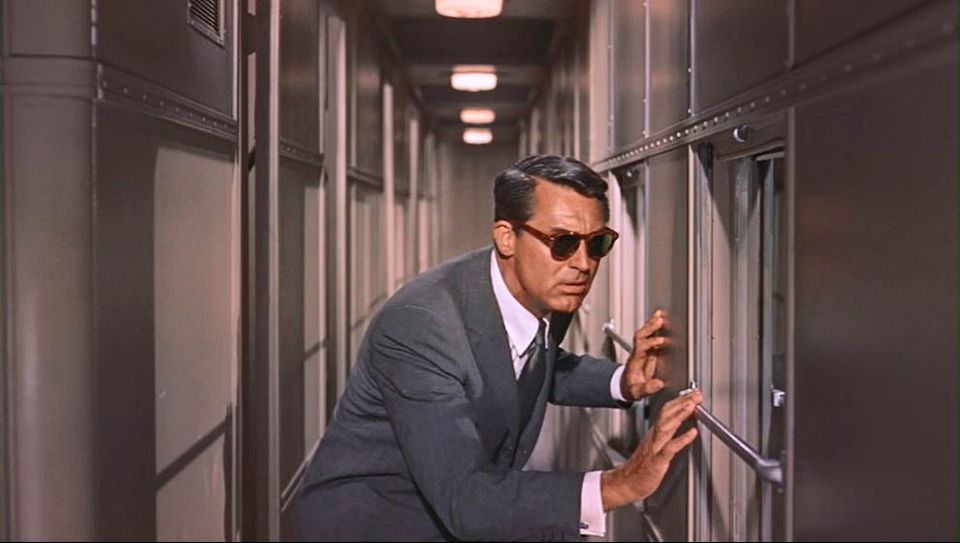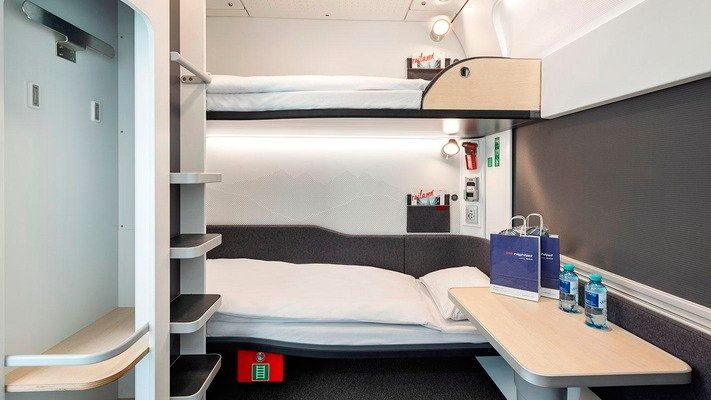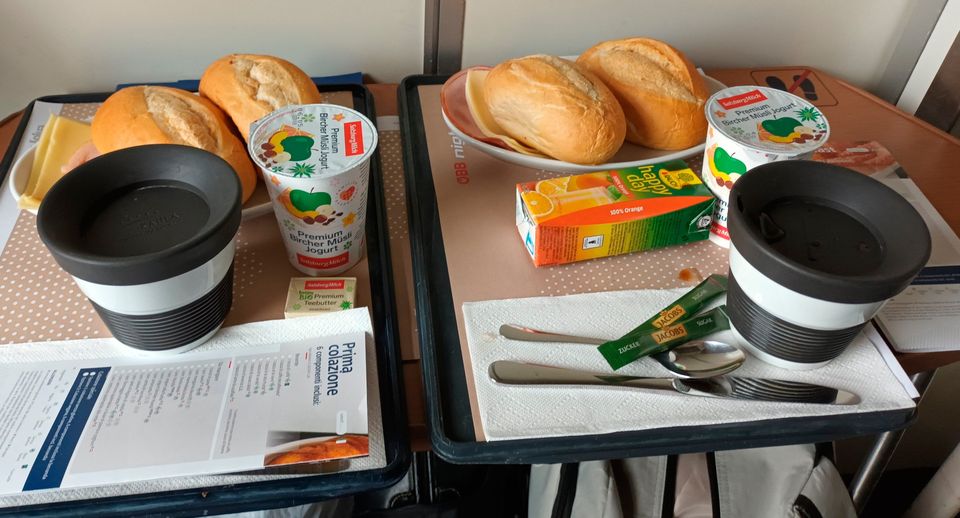There’s one thing you should know right away about a travel service connecting the cities of Europe that calls itself Nightjet. It doesn’t actually involve any jets. In fact the Nightjet service uses trains. But they do run at night, and on each one you can sleep on board as they clatter their way across the continent.
Or try to, at least.
I’ve always had misplaced notions of romance and intrigue concerning trains that offer you the chance to snooze in a proper bed in your own little compartment, and I suspect I’m not alone in this. Personally, I blame Hollywood. One mention of sleeper trains and it’s hard not to think of Hercule Poirot searching for clues among the opulent staterooms of the Orient Express, or maybe Jack Lemmon and Marilyn Monroe mixing Manhattans in a curtained-off couchette in Some Like It Hot, or even Cary Grant snuggled up with Eva Marie Saint on the top bunk of an Amtrak sleeper in North By Northwest.
Jack Lemmon and Marilyn Monroe mixing Manhattans in a couchette in Some Like It Hot
The reality, as I found out recently, is quite different.
Cary Grant up to his neck in intrigue aboard a sleeper train in North By Northwest
But not necessarily in a bad way. It’s just that travelling by scheduled sleeper train in the Europe of 2024 requires a certain adjustment of expectations. And while romance and intrigue are unlikely to be part of the experience, it still has the makings of a grand adventure.
My wife and I recently took in four European capital cities with the aid of sleeper trains, beginning with a quick hop by air from Belfast to London and catching the Eurostar to Brussels from St Pancras after two glasses of bubbly at the trackside Champagne bar (£33, if you must know).
So far, so daylight. But then after a couple of days in Brussels we boarded the Nightjet. This is a service run by Austrian state railways that offers sleeper train connections stretching from Paris to Bucharest and Gdansk to Rome. You can travel in a regular seat if you’re happy snoozing in an upright position, or you can opt for a couchette compartment, a sardine can that will sleep up to six people, which is fine if you’re travelling with a young family, though maybe not so fine if you’re a lone traveller packed in with five other potential snorers you’ve never met.
The remaining option is to do what we did – book a private compartment. Needless to say, it’s the most expensive way to travel, but at least you have roughly the space of four telephone boxes all to yourselves.
Inside a typical Nightjet sleeping compartment – they’re always smaller than they look
When you step on board, the compartment is set up for conventional seating, and when it’s time for bed, the process of converting the seats into bunks for sleeping is so complicated and potentially hand-mangling that you have to call a carriage attendant to do it for you.
The compartments also have a little fold-down table, and what appears to be a cupboard, but which actually contains water taps, a micro sink and a mirror. Toilets are located at either end of the carriage, unless you want to pay a small fortune for one of the few compartments with its own facilities. There’s also a goodie bag containing mini hand towels (everything here is either mini or micro), slippers, bottles of water, ear plugs and eye masks.
The relevance of these last two items will become apparent later.
In addition to making up the bed and generally explaining how a sleeper train works, the carriage attendant can also serve you drinks and snacks, since only a very few European sleeper trains have buffet cars – another Hollywood illusion shattered. And they’ll bring you breakfast too, which is included in the price. You simply tick off what you want on a list of options and it arrives the next morning an hour before you pull into the station.
The European Sleeper couchette compartment, old-fashioned but comfortable
Our Nightjet was bound for Berlin, leaving Brussels shortly after 7pm and arriving in the German capital at about 8.30am the following day. It sounded like it would be a leisurely journey, but no, the train careered through the Belgian countryside at full tilt and was crossing the Rhine at Cologne by 10pm. Where it went after that I’m not entirely sure, since we had our bunks made up and decided to see if sleep was going to be a possibility.
It was. But only occasionally. I’d previously entertained cosy images of being lulled to sleep by a gentle rocking motion and a rhythmic clackety-clack over the rails, but trains make a bigger racket than you’d think. They also judder to a halt, then suddenly jerk back into motion and tilt disturbingly at bends, while the lights of stations and towns flash past the windows like a disco strobe.
No wonder they give you ear plugs and eyeshades.
Breakfast on the Nightjet service to Berlin
We did manage a couple of hours’ sleep here and there, and after breakfast of coffee, bread, cheese and ham, the train pulled into Berlin’s bustling Hauptbanhof. Stepping off into the commuter crowds feeling slightly dazed, we made a beeline for yet more coffee.
Two days later, however, we were boarding another sleeper train, this time leaving Berlin at around 11.15pm to arrive in Amsterdam at 6.30am. It wasn’t a Nightjet service, but a train operated by another company called European Sleeper, a Dutch-Belgian co-operative founded by two sleeper train enthusiasts in 2021.
The carriages had obviously seen plenty of track time over the years, and the first language on all the signs was possibly Czech, but the fact that our compartment was draughty was actually a bit of a bonus, since the Nightjet equivalent tended to get quite hot and stuffy, and we probably had a better night’s sleep as a result.
The lights of Cologne reflected in the Rhine during a brief night-time stop
So was the sleeper train experience worth it? On the whole, I think it was. The Nightjet trip for two cost £206 and the European Sleeper was £262 – expensive for a train journey perhaps, but when you factor in the saving of a night’s hotel accommodation, it’s really not that pricey.
Also, with air travel and airport transfers you can easily waste a couple of days of your vacation, whereas with sleeper trains all your travelling is done at night. You board in the evening in one city, snooze a bit, then step off in the morning ready for your next city. And you can feel a little big smug doing your travelling this way, because the carbon emissions of a comparable plane flight are about 40 times that of the sleeper train.
A budget airline might whisk you to most European cities in an hour or two, but in truth all the glamour has gone out of flying. Yet somehow, despite all the mundane practicalities, sleeper trains haven’t completely lost their aura of romance and adventure. You might not get a perfect night’s sleep, but you will find the journey much more memorable.





